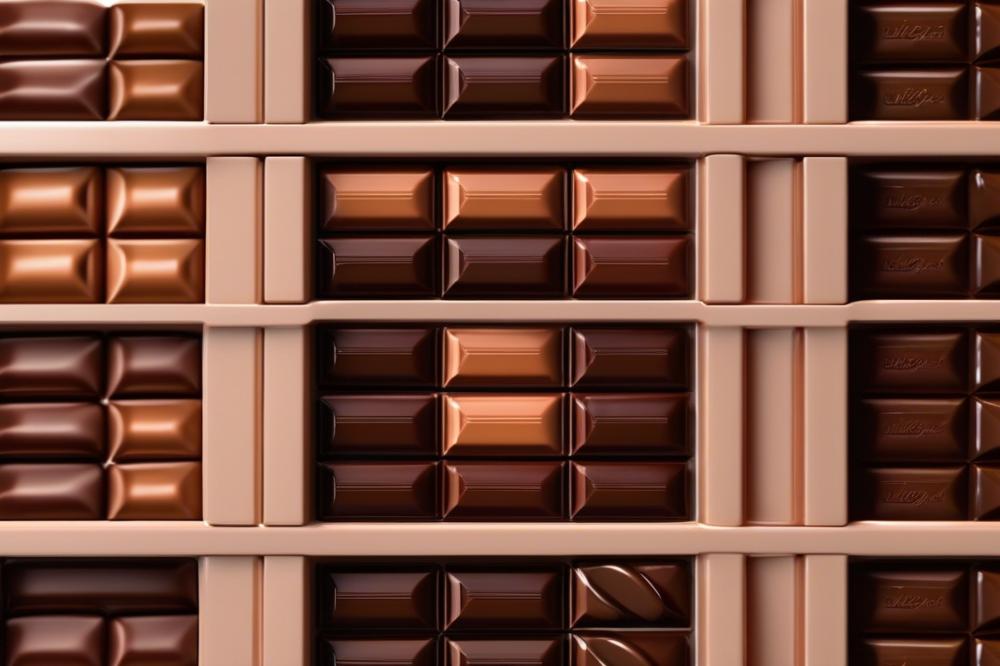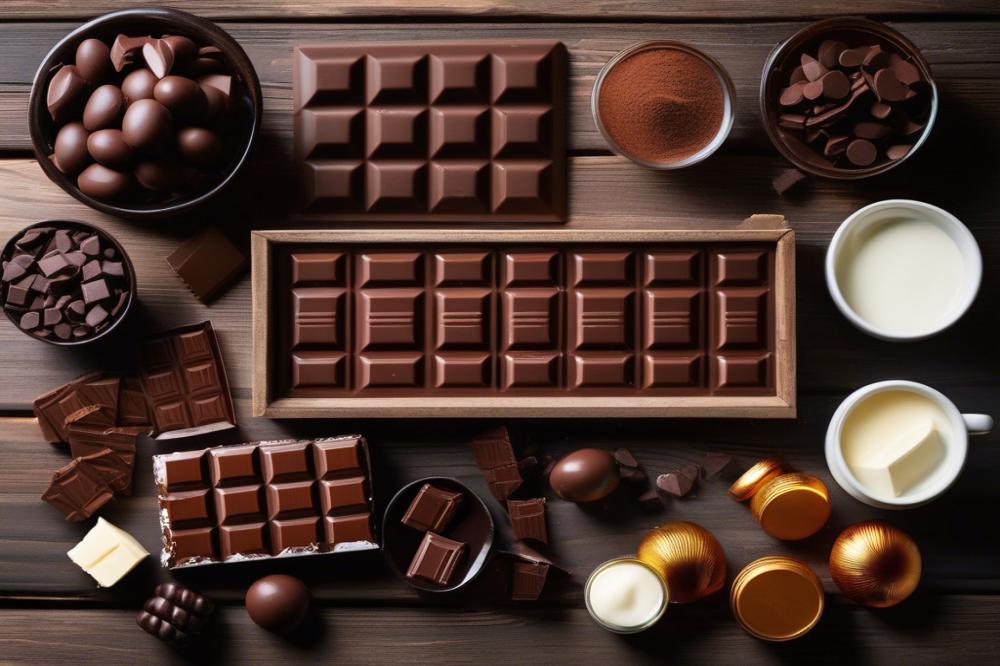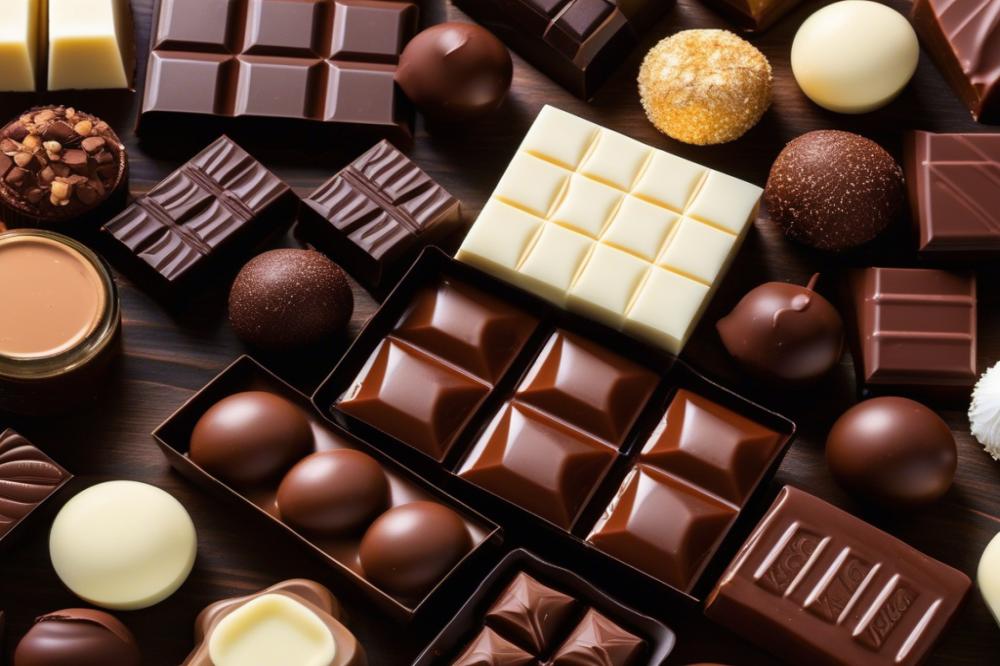Preventing chocolate bloom: Understanding and Importance
chocolate bloom can be a real headache for confectionery makers and chocolate lovers alike. It manifests in two main types: fat bloom and sugar bloom. Fat bloom appears as a dull, grayish film on the surface, caused by cocoa butter migrating to the exterior due to temperature changes. On the other hand, sugar bloom is the result of moisture, which leads to sugar crystallization on the surface. Both types negatively impact visual appeal and texture, ultimately compromising chocolate quality.
Preventing these undesirable conditions is crucial for maintaining the allure of fine chocolates. Nobody wants to bite into a bar that looks or feels less than perfect. For businesses that rely on the enticing charm of chocolate, it’s vital to have effective strategies for chocolate storage and transport. The right approach not only enhances the product’s shelf life but also preserves its taste and texture.
In terms of packaging strategies, there are several areas to consider. Quality packaging can act as a barrier against humidity, which is essential for preventing sugar bloom. Additionally, temperature control during transport is important to avoid the dreaded fat bloom. Maintaining stable conditions reduces the risk of these unwanted changes. Here are some confectionery tips: store chocolate in a cool, dry environment, and avoid frequent temperature fluctuations that could lead to adverse effects. Following these guidelines helps in the proper preservation of chocolate, ensuring it remains a treat to enjoy without worrying about the aesthetic or sensory changes caused by bloom.
Understanding Chocolate Bloom

Chocolate bloom refers to the white or grayish film that can appear on the surface of chocolate. It typically arises under certain conditions related to temperature and moisture. The two main types are fat bloom and sugar bloom. Fat bloom occurs when the cocoa butter in chocolate melts and then solidifies again, resulting in fat crystals forming on the surface. On the other hand, sugar bloom happens when moisture causes sugar to dissolve and subsequently re-crystallize, leading to a rough texture.
This unsightly bloom affects not only the appearance but also the texture of chocolate. Aesthetic appeal is important for consumers, especially in the confectionery market, where the look of a product can influence purchasing decisions. Furthermore, the texture becomes grainy, drastically reducing the overall quality of the chocolate experience. Chocolate should melt smoothly in the mouth; any bloom disrupts that sensation.
Temperature fluctuations play a significant role in chocolate preservation. Storing chocolate at varying temperatures can lead to the melting and hardening cycles that cause bloom. Proper packaging is essential to protect chocolate from both heat and humidity. Using airtight containers can help maintain a stable environment, preventing moisture from affecting the sugar content. Additionally, keeping chocolate in cool, consistent temperatures will significantly decrease the chances of bloom forming.
Humidity control is another critical factor. Excess moisture in the air can increase the risk of sugar bloom. It’s advisable to keep chocolate in a dry area, away from any sources of steam or water. Confectionery tips often recommend avoiding storage in kitchens or near ovens, as these areas tend to have higher humidity levels. By following these guidelines, you can effectively maintain chocolate quality and keep it looking beautiful.
temperature control Strategies

The ideal temperature range for chocolate storage is between 60°F to 70°F (15°C to 21°C). Maintaining this range helps to preserve the flavor and texture of chocolate. Temperatures above this threshold can lead to issues. Warm conditions may cause fats to rise to the surface, resulting in fat bloom. Sugar bloom can occur when chocolate is exposed to moisture, creating a gritty texture that is less appealing.
Understanding how temperature fluctuations affect chocolate quality is crucial. When chocolate goes through these shifts, it can undergo undesirable changes. A consistent environment is essential for keeping your chocolate in top condition. Proper packaging can act as a barrier against fluctuations in temperature. Using opaque containers with insulating materials helps protect the chocolate from heat.
For optimal storage environments, look for cool, dry places. Avoid storing chocolate near ovens, windows, or areas of direct sunlight. Humidity also plays a significant role in chocolate preservation. While chocolate needs to be stored at stable temperatures, controlling humidity levels can prevent sugar bloom. Aim for a relative humidity of around 50% or lower.
Transporting chocolate safely requires careful planning. Consider using insulated packaging to maintain temperature during transit. There are various methods available for this. Ice packs or gel packs can help regulate heat, especially during warm months. Ensure that transport vehicles are climate-controlled whenever possible.
Effective confectionery tips include monitoring both temperature and packaging strategies at all times. Be mindful of how chocolate is displayed in stores. If displayed under bright lights or near heat sources, the quality may quickly decline. Keeping these factors in check promotes a better experience for consumers.
Proper Packaging Techniques
Packaging plays an essential role in preserving chocolate. Once chocolate is exposed to air and moisture, its quality can degrade quickly. Using the right materials can significantly improve the shelf life of your confections.
Importance of Proper Packaging
Maintaining chocolate quality involves more than just keeping it away from heat. Effective packaging acts as a barrier against environmental factors like humidity and temperature fluctuations. Without appropriate packaging, chocolate is at risk of developing both fat and sugar bloom, which ruin its appearance and texture.
Types of Packaging Materials
Several materials offer great protection for chocolate. Foil wraps are excellent for blocking light and moisture. Plastic containers can also keep chocolate safe, particularly when combined with moisture-absorbing packets. Many chocolatiers prefer using airtight bags since they limit air exposure. Selecting the right combination can keep chocolates fresh and appealing.
Sealing and Protecting Chocolate
When storing chocolate, sealing is critical. Always ensure that seals are airtight. Resealable bags can be handy during transport, allowing for easy access while keeping air out. Placing chocolate in a cool, dry place further enhances preservation. Proper spacing prevents chocolates from sticking together or getting crushed.
Humidity Control
Humidity control is vital in preventing issues like chocolate bloom. High moisture levels can lead to unwanted condensation, ruining the surface of finely crafted sweets. Using silica gel packets within containers absorbs extra moisture effectively. Storing chocolate in a climate-controlled environment provides additional peace of mind. Keeping an eye on local weather can help in adjusting storage methods accordingly.
Best Practices for Chocolate Storage
Storing chocolate properly is crucial for maintaining its delightful flavor and smooth texture. Different types of chocolate require specific handling. Dark chocolate is less sensitive to temperature changes and can be stored at room temperature, away from light. Milk chocolate and white chocolate, however, are more delicate. These candies benefit from refrigeration, especially in warm environments. They should be in a controlled cool space, ideally between 60°F and 70°F.
Obstacles like heat and moisture can ruin chocolate. Keeping chocolate in a pantry away from the stove and direct sunlight is essential. Avoid placing chocolate near windows or other heat sources. Sealing chocolate in airtight containers is a smart move to prevent exposure to humidity. Moisture can lead to sugar bloom, resulting in a grainy texture. On the other hand, fat bloom appears as a white film, diminishing the chocolate’s attractiveness.
The Importance of Regular Inventory Checks
Regular inventory checks are often overlooked but are vital in chocolate storage. Inspecting your chocolate every few weeks helps catch any problems early. Look for signs of blooming or discoloration during these evaluations. Rotate stock as needed, using the oldest chocolate first. Keeping a record of purchase dates can streamline this process.
Confectionery Tips for Consumers
Consumers can take steps to maintain chocolate quality at home. Proper packaging can prolong its shelf life. Wrapping chocolate in foil and sealing it in a zip-lock bag protects it from external conditions. If chocolate has been opened, use an airtight container. Always label the containers with the date to remind yourself of freshness. Soil conditions around your home, like high humidity, can affect the storage conditions. Consider using humidity control products when storing chocolate for extended periods.
A simple rule to follow is to avoid temperature fluctuations. Constant conditions are key to chocolate preservation. When chocolate is exposed to varying temperatures, it can suffer from both fat and sugar bloom. Treat chocolate well, and it can remain a source of joy for longer.
Final Thoughts
In summary, preventing chocolate spoilage requires attention to both temperature and packaging strategies. Maintaining a stable environment is crucial. Keep chocolate in a cool, dry place to avoid unwanted changes in texture and appearance. Remember that heat can be detrimental. Choosing the right packaging can also play a significant role. A sealed container will shield chocolate from moisture and light, which are also major causes of deterioration.
Careful storage and transport practices are vital for preserving chocolate’s delightful qualities. When moving chocolate for events or gifts, try to keep it in temperature-controlled environments. This can make a world of difference, especially during warm weather. Additionally, ensure that it is handled gently to avoid unintentional damage.
Chocolate lovers should take these tips to heart. Implementing these strategies not only enhances the taste but also the overall experience of enjoying chocolate. A little effort can go a long way in maintaining its deliciousness. So, next time you purchase chocolate, think about how to store it properly. Your taste buds will thank you!



